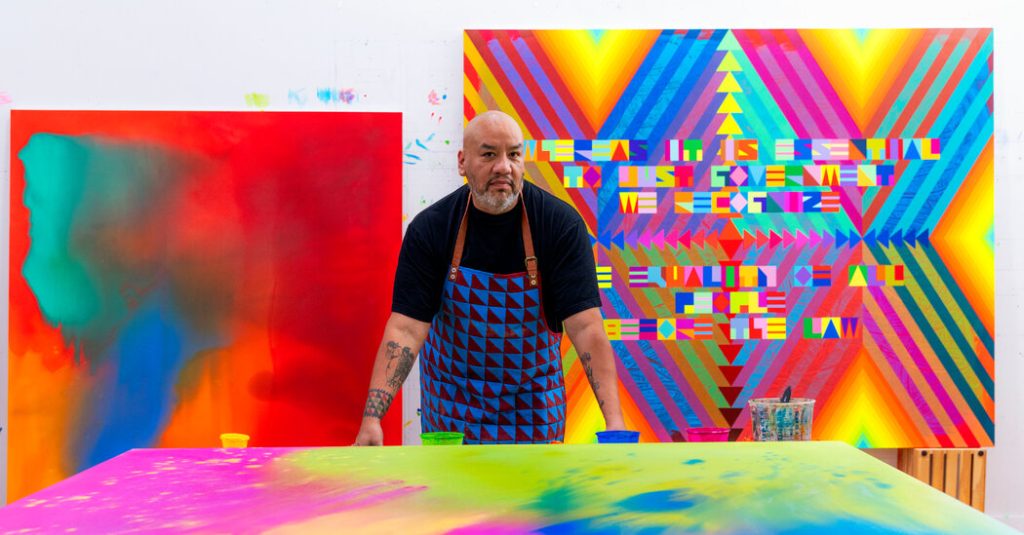On April 18, 26 intertribal Native American dancers and singers from Oklahoma and Colorado will be in Venice, Italy for the Venice Biennale. They will perform the jingle dress dance, a traditional Native American dance that originated with the Ojibwe people. This dance will inaugurate an exhibition in the United States Pavilion titled “the space in which to place me,” showcasing the art of Jeffrey Gibson, a queer Choctaw and Cherokee artist. The exhibition features flags, paintings, sculptures, and a video filled with geometric patterns, intricate beadwork, and political references to Indigenous and broader American histories.
Gibson, the first Native artist to represent the U.S. in the Venice Biennale with a solo exhibition, has a complicated relationship with the United States due to his ancestors being forcibly displaced and his parents coming from poverty and boarding schools. His artworks for the exhibition interweave Native American narratives with other histories of struggle and freedom, aiming to make central what is often on the periphery. The exhibition budget is $5.8 million, with funding from various sources including the Ford Foundation and the Mellon Foundation.
Gibson’s art contains political undertones alongside layers of meaning and form. His artworks feature phrases from foundational American documents, references to social and political movements, and challenging myths of American nationhood. Notably, Gibson adds vintage beaded Native objects to his paintings and infuses them with vibrant colors as a response to the devaluing of certain cultures. His art is a celebration of color inspired by his upbringing and queer culture alongside traditional Native objects.
Gibson’s artistic journey started with a grant that allowed him to commission objects from Native makers, culminating in his breakthrough exhibition, “one becomes the other.” His art combines Western and Indigenous art traditions into playful and evocative hybrid forms. Gibson aims to create spaces of freedom through his art, extending an invitation to the public for radical inclusivity. His art process is deeply personal and extends outward, collaborating with different practitioners and creating spaces for change and transformation.
As Gibson prepares for the Venice Biennale, he reflects on his career and the impact of his art. He aims to continue experimenting and speaking for himself after the exhibition, focusing on intuitive expression. In a world where fixed categories and representation gaps persist, Gibson’s art serves as a joyful revolt, advocating for multifaceted identities and challenging societal norms. Through his work, he opens up space for freedom and invites others to embrace inclusivity and acceptance of diverse identities.








